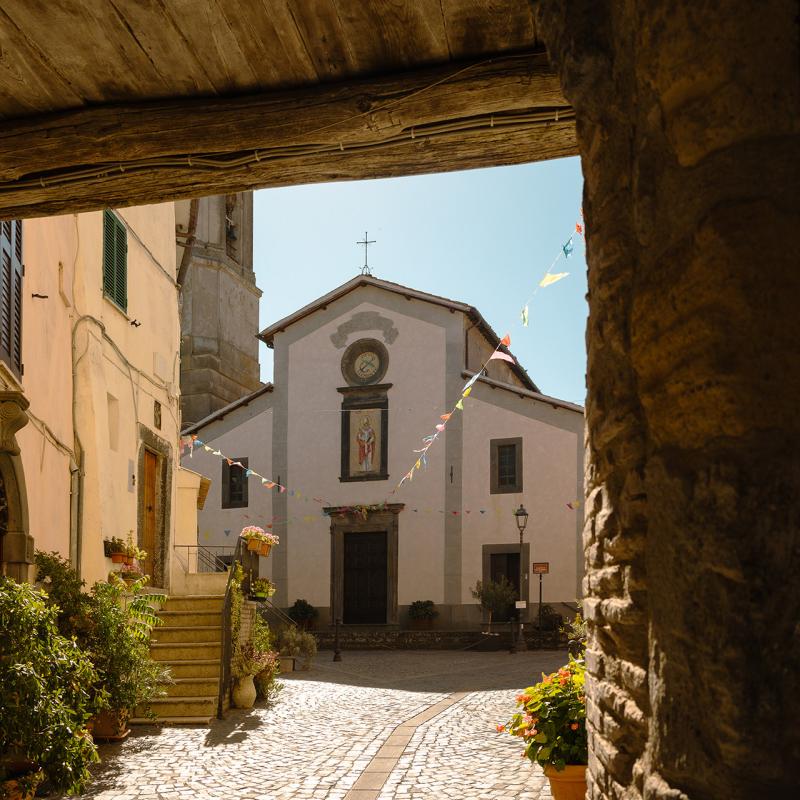The church, whose origins were lost in the rather distant past, has been the only baptismal seat for a long time.
The ancient Romanesque facade and a Gothic arch, now incorporated in Palazzo Farnese, bear witness to the primitive construction. In 1598, encouraged by Dukes Mario and Ferrante Farnese, the present parish church was rebuilt.
The façade has simple and sober lines, enriched by a majestic portal, a large window and a Renaissance style rose window in basalt stone. The bell tower, dating back to 1789 and designed by architect Ridolfi, is reminiscent of the Borromini style.
In the three-nave interior, 18th-century capitals, cornices and pillars are encountered.
In the nave, a splendid 17th-century painted coffered ceiling catches the eye. The majestic altarpiece, by the Roman school of the first decade of the 19th century, depicts St. Clement in a pontifical pose. On either side of the high altar are paintings of Latera's first co-patrons, St. Pancratius and St. Macarius.
Entering on the right, a canvas shows Our Lady of Mount Carmel and St. Charles. This is followed by St. John the Beheaded, Our Lady of the Rosary (attributed to Sienese painter E. Nasini), a crucifix on canvas and St. Angel the Martyr. On the left, we find St. Gregory VII of Sovana, an artistic carved wooden crucifix donated by the Farnese family of Latera in the 17th century and a fascinating depiction of the souls in purgatory.
The baptistery, now a Eucharistic tabernacle, made in 1590 of basalt stone and donated two years later by the Duke of Latera, Mario Farnese to the Pievania, is of considerable value.
A special mention goes to the organ, installed in 1799 above the imposing main entrance. Of the previous structure donated by Duke Pietro Farnese in 1626, we can only admire the splendid and original gilded wooden sound box that houses the new organ, built and refitted by Angelo Morettini in the late 1800s.

